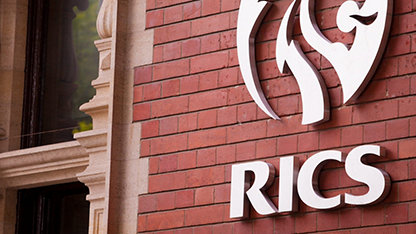- Rent expectations for prime office sites remain much higher than those for secondary sites with energy efficiency and quality sites considerations mentioned anecdotally
- Recent rises in interest rates causing drop in investor demand
- Occupier market conditions more resilient, although parts of the office and retail sectors continue to struggle
- 68% of respondents feel the overall market is in a downturn, with the deteriorating credit environment playing a significant role
- Credit conditions at the weakest level since records began in Q3 2014
The Royal Institution of Chartered Surveyors (RICS) Q2 UK Commercial Property Monitor reports a renewed downturn in the market, with rising interest rates and the expectation of more to come, negatively impacting investment. Credit conditions look especially weak.
While most respondents believe the market is in a downward cycle (68%), there are signs of resilience, particularly in industrial property, prime office space in certain locations, and some alternative asset classes such as student housing.
The rents and expected rent projections for prime offices are outperforming those for secondary sites across the UK with a UK wide net balance for rent expectations of +22 for prime and -47 for secondary for the next 12 months. Anecdotally, quality office space, and the environmental performance of buildings and energy efficiency regulations are mentioned by our respondents as having a big influence on this. Central London displays the widest gap between prime and secondary office markets.
Regarding the wider outlook, twelve-month rental growth projections remain mixed at the all sector UK level with industrial rents also predicted to rise over the year ahead and retail expected to fall. The general commercial rental picture is universal throughout the UK.
Away from the mainstream sectors, rental growth expectations remain comfortably in positive territory across multifamily residential, aged care facilities, student housing, life sciences and data centres.
Overall, tenant demand fell this quarter, with the net balance -10%, down from -3% in Q1. Tenant demand fell across office and retail sectors as a whole, with net balances of -21% and -26%, respectively. Tenant demand for the industrial sector, however, remains positive, with a net reading of +10%.
The availability of industrial property therefore remains flat, while survey respondents reported increased availability for office and retail property.
Investment demand posted a net balance reading of -22% in Q2, marking a renewed decline in sentiment following the -14% reported in Q1. Looking at individual sectors the net balances fell to -34% for both the office and retail sectors, while the investment picture is considerably less gloomy for the industrial sector, with it posting a flat-to-marginally negative figure of -2%.
Tarrant Parsons, Senior Economist at RICS, said: “The stubbornness of UK inflation over recent months has once again shifted the outlook for monetary policy, with further interest rate hikes from the Bank of England now priced-in across financial markets. This has, almost inevitably, impacted sentiment within the commercial property market, as higher borrowing costs weigh on investor demand and place renewed pressure on capital values. Meanwhile, occupier activity, although also losing some momentum in Q2, appears a little more resilient at present. As such, this is reflected in still positive rental growth expectations for the year ahead across the industrial sector, prime offices, and for several of the more alternative asset classes tracked in the survey.
“This week’s UK Government announcement on loosening regulations surrounding the conversion of certain types of commercial property into residential use could encourage investment opportunities. If carried out to a suitable standard, these types of conversions have the potential to reduce the overhang of vacant retail space and provide much needed housing in central locations. However, while these measures could prove beneficial at the margins, given the scale of the challenges around housing supply and unused retail premises, they are unlikely (on their own) to be sufficient to fix the deeper market issues.”
-ENDS-
You may find a full copy of the UK Commercial Property report at this link.
Commentary from survey respondents regionally can be found in the economic pdf on the back pages – you are free to use these.
About RICS
We are RICS. Everything we do is designed to effect positive change in the built and natural environments. Through our respected global standards, leading professional progression and our trusted data and insight, we promote and enforce the highest professional standards in the development and management of land, real estate, construction and infrastructure.
Our work with others provides a foundation for confident markets, pioneers better places to live and work and is a force for positive social impact.
For more information:
Kate King kking@rics.org
Kris Hicks khicks@rics.org












